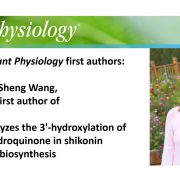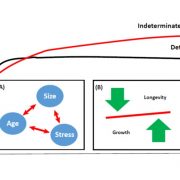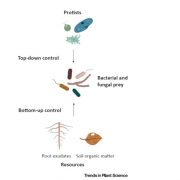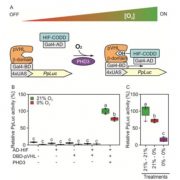
Transforming Pixels to Millimeters: Geometric Camera Calibration
Plantae Webinars, Research, Research Skills, Webinars0 Comments
/
Transforming Pixels to Millimeters: Geometric Camera Calibration
Recorded November 29, 2018
About This Webinar
The affordability and ubiquity of cameras have led to their increasing use in many disciplines. In plant phenomics, it is common to see experimental data based on image-derived…

Plant Scientist Highlight: Sue Hartley
BlogA series by Alyssa Preiser
Why did you decide to pursue science as you went through college, and what got you particularly interested in plant defense and plant/organism interactions?
I was always interested in science. It started as a young kid when I used to collect natural history - animal skulls,…

Recognizing Plant Physiology first authors: Sheng Wang
Plant Physiology, Plant Physiology: Author ProfilesSheng Wang, first author of CYP76B74 catalyzes the 3'-hydroxylation of geranylhydroquinone in shikonin biosynthesis
Current Position: Assistant Researcher at National Resources Center of Chinese Materia Medica, China Academy of Chinese Medical Sciences, Beijing, China
Education: B.S. in Resources…

Recognizing Plant Physiology first authors: Wojciech J. Nawrocki
Plant Physiology, Plant Physiology: Author ProfilesWojciech J. Nawrocki, first author of Chlororespiration controls growth under intermittent light
Current Position: Postdoctoral fellow at the VU Amsterdam
Education: MSc in Biophysics, Sorbonne Université, Paris, France, PhD, Institut de Biologie Physico-Chimique, CNRS, Paris, France
Non-scientific…

Opinion: Limits to tree growth and longevity (TIPS)
Plant Science Research WeeklyI think trees are awesome, and I mean that in the truest sense of the word. They dwarf us in height, and when we look at a tree that has lived for hundreds or thousands of years it is impossible not to think of that span in terms of human generations and human history. But, trees don’t live or grow…

Opinion: Rapid responses to abiotic stress (TIPS)
Plant Science Research WeeklySeveral recent studies have demonstrated that plants are able to respond to environmental challenges within minutes, through electrical signals, calcium oscillations, hydraulic changes, metabolites such as glutamate, and reactive oxygen species. Kollist et al. review studies of rapid responses that control…

White Paper: Reinventing postgraduate training in the plant sciences (Plant Direct)
Plant Science Research Network, Plant Science Research WeeklyWhat tools and skills do tomorrow’s plant scientists need, and how can we as a community ensure that today’s students get appropriate training? The Plant Science Research Network (PSRN), a consortium of plant science organizations and societies, has organized a series of workshops and discussions…

Review. Protists: Puppetmasters of the rhizosphere microbiome ($) TIPS
Plant Science Research WeeklyThe enemy of my enemy is my friend, right? Gao et al. argue that we should be more aware of the beneficial impacts of friendly protists that eat potentially harmful microbes in the rhizosphere (they deliberately exclude plant pathogenic protists in their discussion). Protists are a diverse paraphyletic…

A synthetic oxygen sensing device for plants
Plant Science Research WeeklyPlants can die from a lack of oxygen (hypoxia), which contributes to the devastating losses caused by flooding. Iacopino et al. set out to develop a more specific method for detecting oxygen levels in plants, based on the mammalian Hypoxia Inducible transcription Factor HIF. HIF is hydroxylated by…

